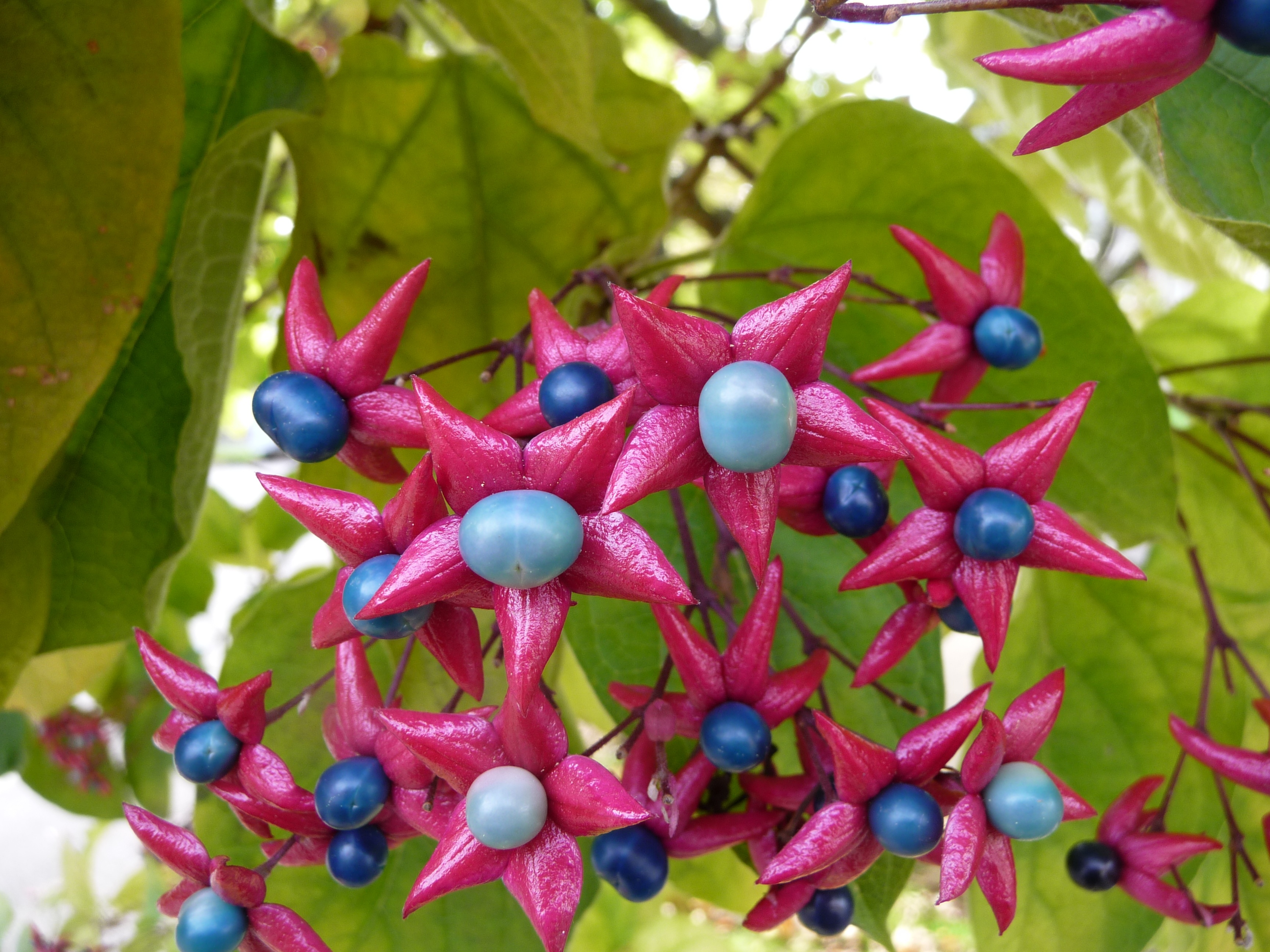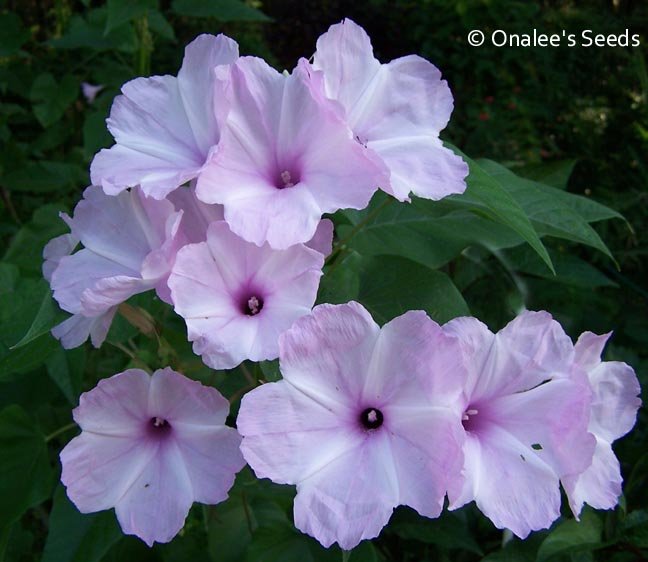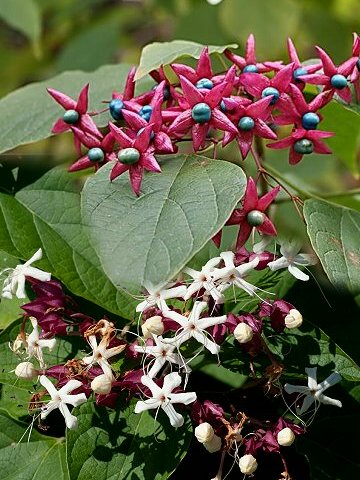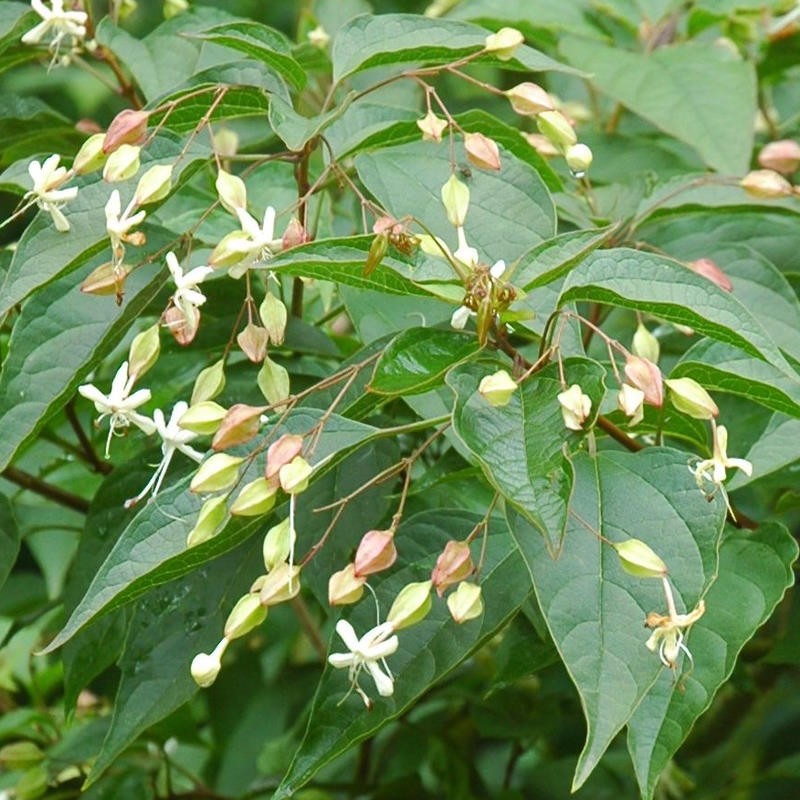How To Grow Clerodendrum Trichotomum The Harlequin Glorybower
Introduction
Clerodendrum trichotomum, also known as the Harlequin Glorybower, is a beautiful deciduous shrub that is native to China, Korea, Japan, India, and the Philippines. It is known for its large, fragrant white flowers that are held in clusters in the summer. The flowers are followed by bright blue berries that are attractive to birds.
The Harlequin Glorybower is a relatively easy plant to grow, and it is a popular choice for gardens in USDA zones 7-9. It can be grown in full sun or partial shade, and it prefers well-drained soil. The plant is drought-tolerant, but it will do best with regular watering.
Growing Conditions
- Sunlight: The Harlequin Glorybower can be grown in full sun or partial shade. However, it will flower more profusely in full sun.
- Soil: The Harlequin Glorybower prefers well-drained soil. It can tolerate a wide range of soil pH levels, but it prefers slightly acidic soil.
- Watering: The Harlequin Glorybower is drought-tolerant, but it will do best with regular watering. Water the plant deeply once a week during the summer, and less often during the winter.
- Fertilizer: The Harlequin Glorybower does not need to be fertilized often. A light application of fertilizer in the spring will help to promote flowering.
- Pests and Diseases: The Harlequin Glorybower is a relatively pest- and disease-free plant. However, it can be susceptible to aphids, scale, and mealybugs. If you see any pests, you can treat them with insecticidal soap or neem oil.
Propagation
The Harlequin Glorybower can be propagated by seed, cuttings, or division.
- Seed: Sow the seeds in the spring in a well-drained potting mix. The seeds will germinate in about 2-3 weeks.
- Cuttings: Take semi-hardwood cuttings in the summer. Root the cuttings in a well-drained potting mix. The cuttings will root in about 4-6 weeks.
- Division: Divide the Harlequin Glorybower in the spring or fall. Dig up the plant and carefully separate the roots. Replant the divisions in well-drained soil.
Pruning
The Harlequin Glorybower does not need to be pruned often. However, you can prune it in the spring to remove any dead or damaged branches. You can also prune it to shape the plant.
Winter Care
In cold climates, the Harlequin Glorybower may need to be protected from the cold. You can mulch the plant's roots with a thick layer of mulch. You can also cover the plant with a burlap sack or other protective covering.
Conclusion
The Harlequin Glorybower is a beautiful and easy-to-grow plant that is perfect for gardens in USDA zones 7-9. It is a great choice for a specimen plant or for use in a shrub border. With proper care, the Harlequin Glorybower will provide you with years of enjoyment.
Clerodendrum trichotomum, also known as the harlequin glorybower, is a beautiful and versatile plant that can be grown as an ornamental shrub or tree. It is native to China, Korea, Taiwan, Japan, India, and the Philippines, and is hardy in USDA zones 7-9.
The harlequin glorybower has large, deciduous leaves that are green on top and paler underneath. The flowers are white or pink, and are borne in clusters on branched peduncles. The plant has a strong peanut butter scent, which is especially noticeable when the leaves are crushed.
Clerodendrum trichotomum is a relatively easy plant to care for. It prefers full sun or partial shade, and well-drained soil. It is drought-tolerant once established, but will benefit from regular watering during the summer months.
If you are interested in learning more about Clerodendrum trichotomum, please visit Garden Wiki. This website has a wealth of information about the plant, including its history, cultivation, and medicinal uses.
FAQ of clerodendrum trichotomum
Q: How do you propagate Clerodendrum trichotomum?
A: Clerodendrum trichotomum can be propagated by sowing seed in spring or by taking cuttings of half-hardened wood during winter or summer.
To sow seed:
- Sow the seeds in a well-draining potting mix.
- Keep the potting mix moist but not soggy.
- Place the pot in a warm, sunny location.
- Germination should occur within 2-4 weeks.
To take cuttings:
- Take a 4-6 inch cutting from a healthy plant.
- Remove the lower leaves from the cutting.
- Dip the cutting in rooting hormone.
- Plant the cutting in a well-draining potting mix.
- Keep the potting mix moist but not soggy.
- Place the pot in a warm, shady location.
- Rooting should occur within 4-6 weeks.
Q: What are the medicinal uses of Clerodendrum trichotomum?
A: Clerodendrum trichotomum has been used in traditional Chinese medicine for centuries to treat a variety of ailments, including:
- Hypertension
- Arthritis
- Rheumatism
- Fever
- Cough
- Sore throat
- Diarrhea
- Dysentery
- Wounds
There is some scientific evidence to support the medicinal uses of Clerodendrum trichotomum. For example, a study published in the journal "Phytomedicine" found that Clerodendrum trichotomum leaf extract was effective in preventing hyperuricemia and associated inflammation.
However, more research is needed to fully understand the medicinal properties of Clerodendrum trichotomum.
Q: What are the common problems with Clerodendrum trichotomum?
A: The most common problems with Clerodendrum trichotomum are:
- Leaf spot
- Mealybugs
- Aphids
- Spider mites
- Root rot
Leaf spot is a fungal disease that can cause yellow or brown spots on the leaves. To prevent leaf spot, water the plant regularly and avoid overwatering. You can also use a fungicide to treat leaf spot.
Mealybugs are small, white insects that suck the sap from plants. To control mealybugs, you can wipe them off the leaves with a cotton ball dipped in rubbing alcohol. You can also use an insecticidal soap or neem oil to kill mealybugs.
Aphids are small, green insects that also suck the sap from plants. To control aphids, you can spray the plant with water or insecticidal soap. You can also use neem oil or horticultural oil to kill aphids.
Spider mites are tiny, red or brown insects that live on the underside of leaves. To control spider mites, you can increase the humidity around the plant or spray the plant with water. You can also use an insecticidal soap or neem oil to kill spider mites.
Root rot is a fungal disease that can kill plants. To prevent root rot, water the plant regularly but not too much. You should also make sure that the plant is in a well-draining pot.
Image of clerodendrum trichotomum
- Harlequin glorybower with blue flowers and white bracts.

- Glorytree with pink flowers and white bracts.

- Peanut butter tree with white flowers and purple bracts.

- Close-up of a single flower of Clerodendrum trichotomum.
- A cluster of flowers of Clerodendrum trichotomum.

- A mature Clerodendrum trichotomum tree.

- A young Clerodendrum trichotomum plant.

- A leaf of Clerodendrum trichotomum.
- A seed pod of Clerodendrum trichotomum.

- A landscaped garden with Clerodendrum trichotomum trees.


Post a Comment for "How To Grow Clerodendrum Trichotomum The Harlequin Glorybower"